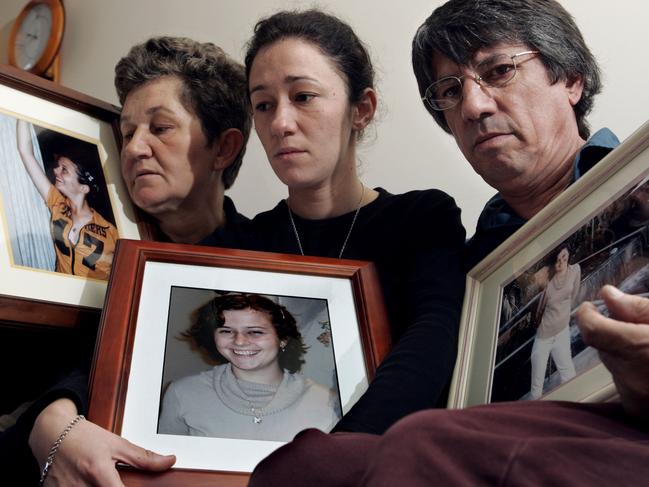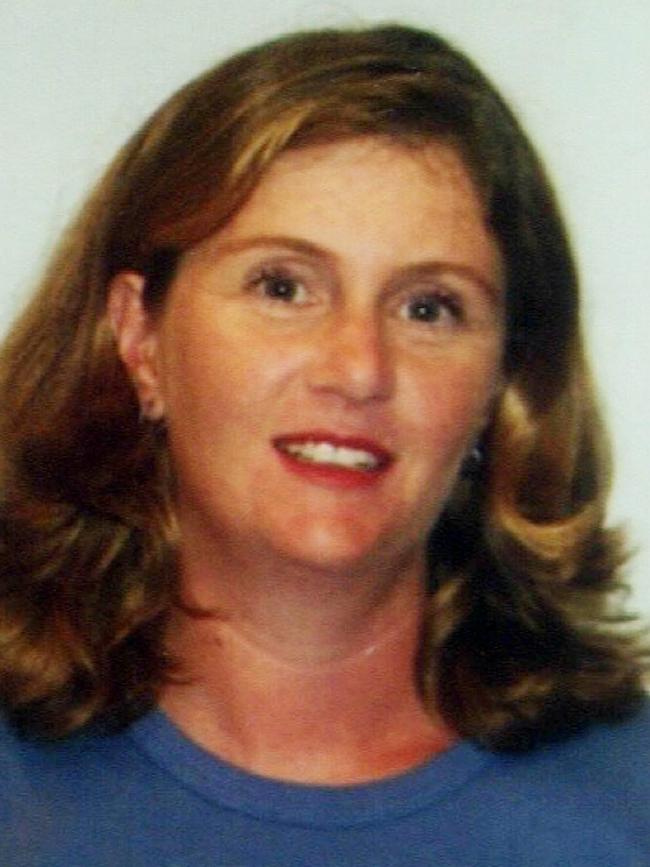NOTHING can prepare a child for what happens after that knock at the door at 3am.
It’s the police and they’re there to deliver that most terrible of news – a loved one is dead, murdered.
This news can and will trigger grief, pain, depression, fear and anxiety that may last a lifetime. And from that moment it is the question “why” that will forever be etched on that child’s psyche.
Why us? Why my family? Why would someone do that to another human being?
Father of Tricia Riggs doesn’t believe her killer
These are the questions that long-suffering family members ask the police, and the questions that eat away at researchers who are desperate to get inside the mind of a killer.
Sadly, the answers are rarely found, but Griffith University is attempting to unravel at least some.
Last month it launched Australia’s first Homicide Research Unit aimed at uncovering some of the long-term impacts of homicide on loved ones and better informing the community about the ripple effects of murder.
The unit’s first project will focus on studying the effects of murder on children to see how it impacts every aspect of their lives into adulthood.
The findings will be delivered to Queensland’s renowned Homicide Unit detectives, whose job it is to get a conviction for that little boy or girl.

Griffith senior research fellow Dr Samara McPhedran is leading the study, which is due to commence in the coming weeks.
Researchers will collect statements from people who, as children, lost a loved one to murder.
They will also speak to detectives about their experiences speaking with children as their investigation unfolds.
McPhedran believes the work – and more importantly the Homicide Research Unit’s arrival in Australian academia – can improve the way police, even governments, deal with such a delicate matter.
“We will be doing research that helps us better understand homicide, its impacts, and its prevention,” she says.
“Most importantly, our work is about finding practical and effective strategies to reduce homicide offending, as well as ways to support homicide victims’ loved ones.”
So how will that relate to everyday Queenslanders and help those touched by murder?

M cPhedran says it is her hope the research will influence policy making and legislation.
“We are working very closely with government and non-government groups around the country to make sure our work is relevant to their everyday challenges,” she says.
“We want our research to help those agencies as they go about their work – whether that is investigating homicides, dealing with homicide offenders in the justice system, or providing aid to loved ones who are left behind.”
The unit’s work will be vital to people like Brisbane lawyer Helena Mrmos, who only last week had to relive the horrific murder of her teenage sister Vlatka back in 2004.
Vlatka’s killer, her ex-boyfriend Bojan Vulic, was released on parole last Tuesday and is now able to live back in the community that he once forever stained with his evil actions.
In January 2004 Vulic lured 17-year-old Vlatka into a car and stabbed her 45 times.
The crime rattled Brisbane’s ethic community and left many migrants feeling unsafe.
Public vigils, attended by hundreds, lit up Brisbane’s southside but the pain felt by Helena Mrmos 15 years ago has never dulled.
“We were all fearful that he was to apply (for parole) and get out,” she says.
“But we thought ‘no way’ he’s going to come out in 15 years because it’s a savage murder, a premeditated murder.”

H omicide Unit detective Senior Sergeant Chris Knight knows better than most the ongoing trauma experienced by people like Helena Mrmos.
He has investigated some of Queensland’s most heinous and high-profile cases, including the murder of Patricia Riggs in 2001, whose remains were the object of a police dig at Burpengary just this week.
Knight believes a “knowledge gap” exists when it comes to murder and the experience of police is under-utilised when it comes to society learning more about it.
“Operational detectives who work within the Homicide Investigation Unit have a unique opportunity to observe the devastating end result of violent behaviours and build relationships with those most affected and involved,” he says.
“My hope is that our perspective may provide Dr McPhedran’s researchers with a perspective that is rarely utilised.”
Knight says the creation of the Homicide Research Unit is the first step in an important journey to better helping Queensland victims.
“We’re optimistic that any increased awareness aimed at disrupting homicide offences is a very good use of our time and resources,” he says.



Add your comment to this story
To join the conversation, please log in. Don't have an account? Register
Join the conversation, you are commenting as Logout
TV actor turned terrorist walks free from jail
An actor who was arrested and convicted as part of Australia’s largest terrorism operation is a free man after serving over 18 years.
Judge scolds AFP over ankle bracelets
A surprising argument about electronic monitoring used by the AFP to deny people bail has been lambasted in court.